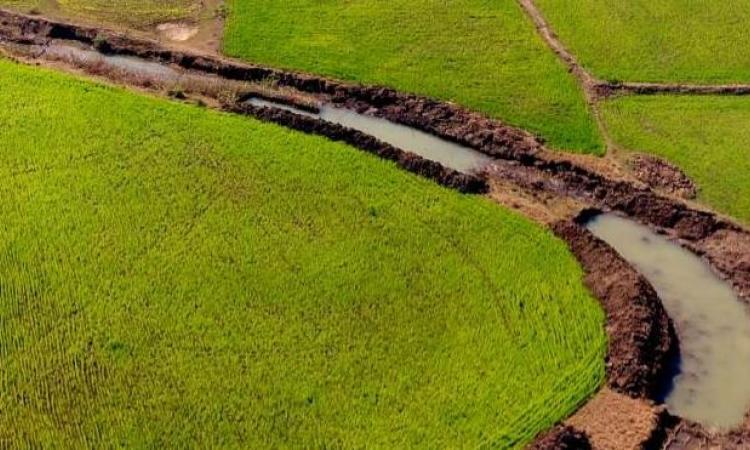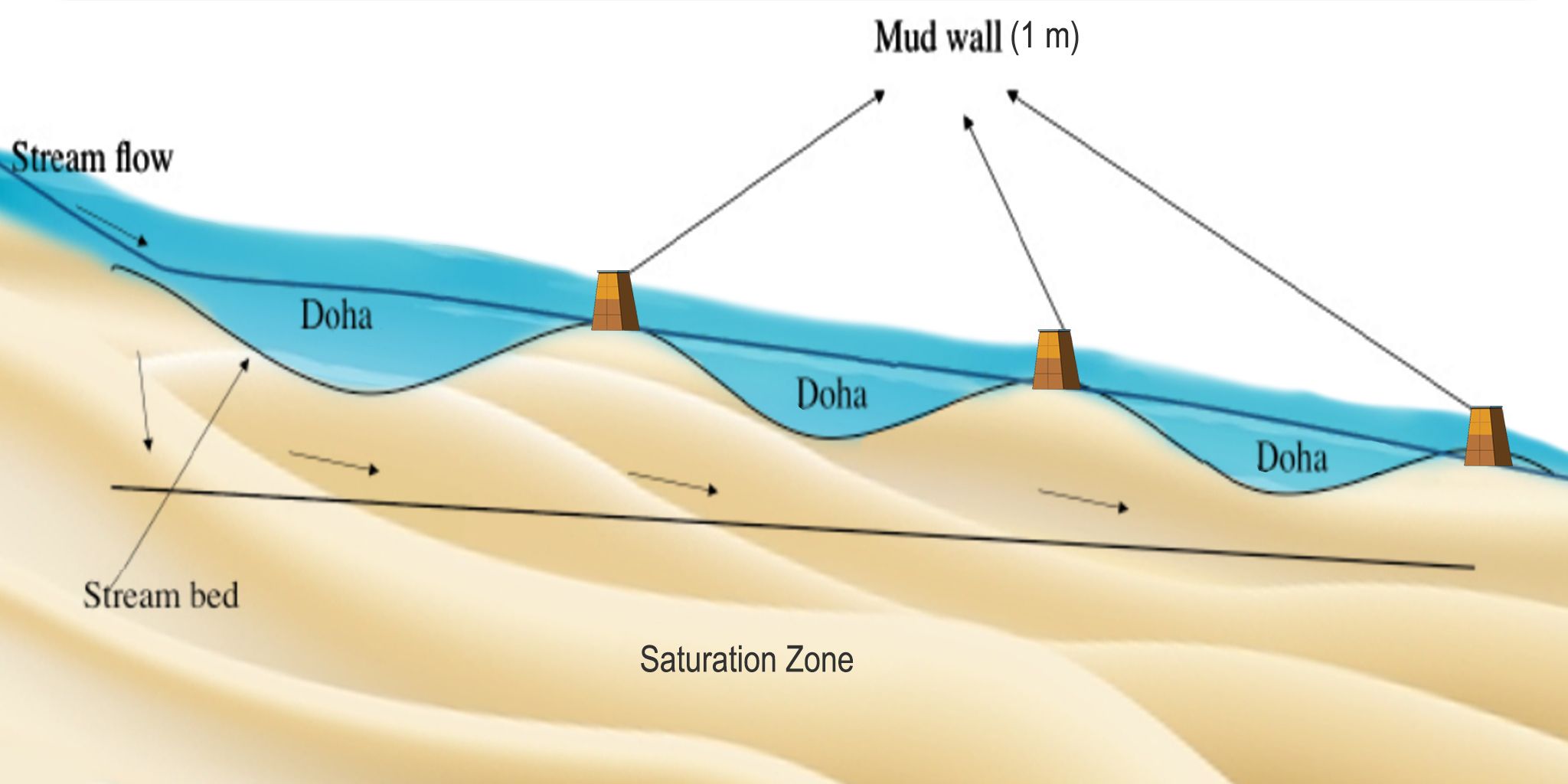
The most important precondition to make farming profitable for small and marginal tribal farmers residing in undulating terrains is the stabilization of the Kharif crop. Long dry spells between two successive monsoon showers are becoming increasingly common. This has led to a high rate of crop failure among tribal farmers dependent upon monsoon for cultivation.
Seasonal streams and nalas act as lifeboats for these farmers as they fulfill critical irrigation needs during dry spells. However, most such streams run dry two months post-monsoon. Undulating terrains and increased intensity of rains due to climate change impact lead to heavy runoff. This coupled with suboptimal base levels is resulting in drying of the seasonal streams faster than ever before.
The rejuvenation of such streams/nalas will not only increase the power of these streams but also recharge groundwater and provide for the irrigation needs of small and marginal farmers.
Dohas
Dohas are saucer-shaped structures built along the length of the stream to allow for more quantum of water to be stored, thus increasing the storage and recharge capacity of the stream. This, in turn, increases the power of the stream. Known as ‘Doh’ in Marathi, this simple water harvesting technology has been used by farmers of water-scarce Vidarbha for a long time.
These structures were popularised by Dilasa Sansthan, an NGO working predominantly on water management issues in the Vidarbha and Marathwada regions of Maharashtra. A team member of Dilasa Sansthan chanced upon ‘Doh’ while conducting a feasibility survey in a village. He found potential in the structure as it provided scope for water harvesting. The structures were piloted in a village in 2009 after mapping for suitable spots in the river. Close monitoring of water levels was undertaken to understand the impact of the structures. It was found that the structure led to improved base flows of the river and also increased water-level in the wells of the village.
Over the last decade, Dohas have been taken up and implemented by over a dozen development organizations and even the government. This article shares the experience of Action for Social Advancement (ASA) in implementing Dohas in the Eastern tribal belt of Madhya Pradesh.
ASA initiated work on Dohas in 2017 after a few of its team members visited the field areas of Dilasa Sansthan. They saw potential in Dohas and replicated the structures in undulating terrains of the Satpura Maikal landscape. While the structures were built in IInd and IIIrd order streams in Maharashtra in uniform plain landscapes by Dilasa, ASA piloted the intervention on Ist order streams of undulating landscapes of Mandla, Dindori, Shahdol, Annupur and Betul districts situated in eastern Madhya Pradesh.

As the conditions and streams differ in the undulating landscapes, the average size of Doha built by ASA in Ist order streams is smaller than those built by Dilasa Sansthan. The average Doha in the region is 30-meter long and 1.5 to 3 metres deep. One such Doha stores 850 cubic metres of water and provides irrigation to 3-4 farmers with land in proximity to the stream. Two such Dohas are separated by a distance of 15 meters. A one-kilometre long stream has around 10-12 Dohas. The stream sections with curves and bends are excluded while constructing the structures.
Post the identification of a suitable stream, Dohas are excavated in the stream bed, either through manual labour or through excavators. ASA provided for excavators and the Doha digging expenditure. Post the digging of pits, the excavated soil was used for bunding the structure, particularly the bank sides of the stream. The farmers benefitting from the Dohas bunded the structures by contributing voluntary labour. The silt excavated from the stream was used by farmers to improve the soil quality of their fields and the cost of transportation was borne by interested farmers.
A key aspect taken into consideration by ASA while implementing Dohas in any village is the formation of Water user groups to ensure the maintenance of the structures. Due to the undulating landscape, the Dohas are vulnerable to continuous silting and needs to be periodically removed to ensure optimum storage of water. The assumed lifespan of these structures without maintenance is four to five years. This makes community participation an inalienable part of the intervention.
Over the last 2 years, ASA has constructed 750 Dohas directly benefitting around 1400 tribal farmers by bringing 1100 hectares of rainfed land under irrigation.
Scale-up potential
A key feature of Doha is that it is an earthen structure constructed without the need for cement or other construction material. As it is constructed in the stream bed, there is no issue of land ownership. Their low-cost and eco-friendly nature provides a good potential for replication and scale-up in seasonal/perennial streams. These structures have had good success in most terrains and different stream orders. In the last 10 years, since they were first implemented, Dohas have seen replication across the nation both by government and non-government entities. The scale-up of Dohas at the National level is possible by including it as a standard intervention under the Mahatma Gandhi National Rural Employment Guarantee Scheme.
This article is a part of the ‘Compendium of Best Practices: Water Management in Tribal areas’, a document developed by AKRSP(I) and Axis Bank Foundation (ABF).
Author: Anjali Aggarwal is a researcher with seven years of experience in documenting and understanding the change brought by grassroots organizations working in rural parts of India. An alumnus of the Indian Institute of Forest Management, her interest areas are Conservation, Livelihoods, and Education. She likes bird watching and having a dialogue with rural community members.